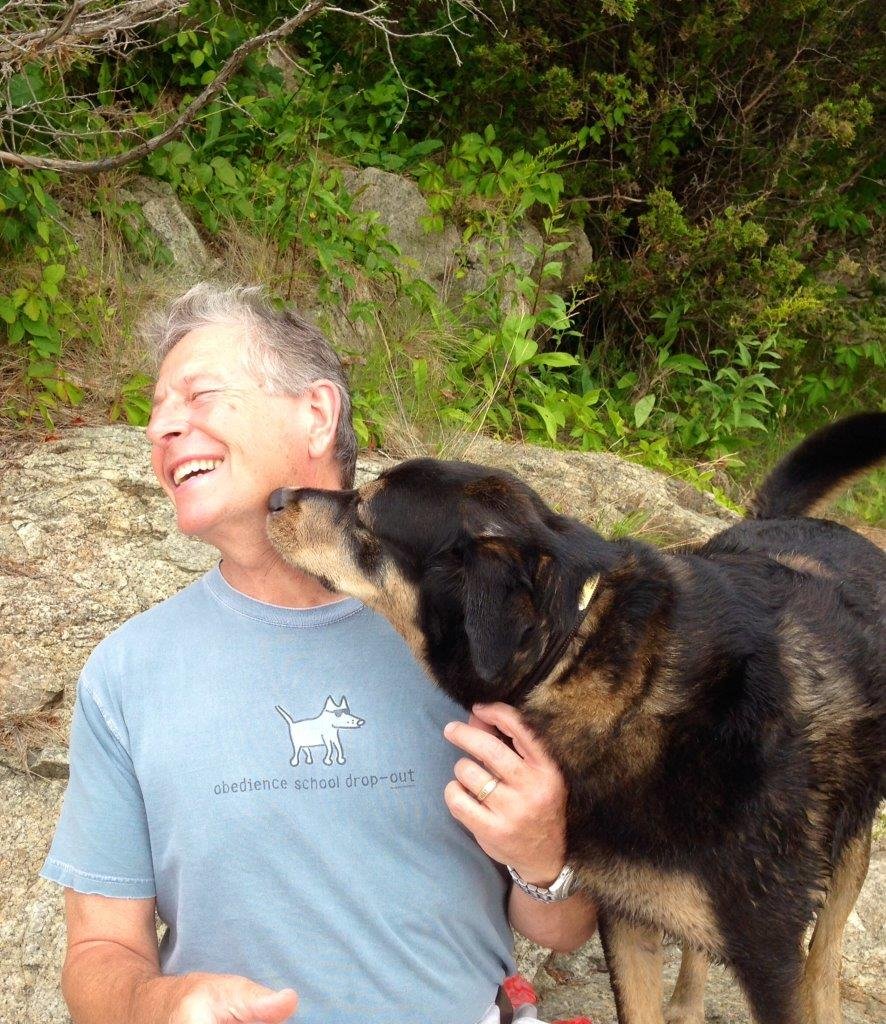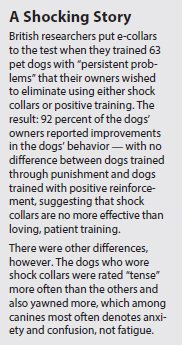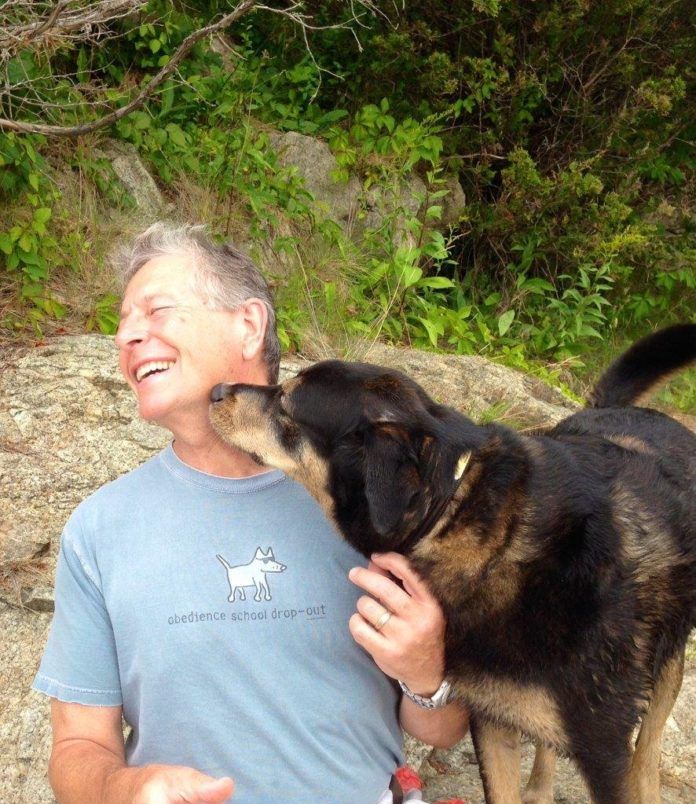“Here’s the thing,” says Nicholas Dodman, BVMS, DACVB, Director of the Tufts Animal Behavior Clinic. “For the majority of dogs, especially young, fit, athletic breeds, walking them only on a lead is not sufficient. They need real exercise. They need to run, and they need to run off leash. They’re bred for it. It’s chapter 1 of dog ownership. I used to take my 84-year-old mother for a one-mile walk, and neither of us was tired afterward.”
But here’s the other thing. Dogs are not born responding to the command to “Come” when you want them to return to you. And it’s not as simple to teach as “Sit,” Stay,” and “Down.” It takes more patience, and it often goes unlearned.
“Ask 100 dog owners what they would wish for if they could only have one wish from the genie in the bottle, and the answer would be, ‘I wish he would come when I call.'”
This article will tell you how to make that happen. In the meantime, however, for a dog who won’t come back to you when you “cut the umbilical cord,” so to speak, you need some options.
Creative ways to let your dog loose
Many areas have fenced-in dog parks. Even on Manhattan’s busy Upper East Side, there’s an enclosed park within a park where dogs can run free. It’s not a terribly large space, but it’s certainly an alternative for letting your dog burn some canine energy. Your pet can run 30 to 40 miles an hour; the world’s greatest human Olympiad runners, about 13 miles an hour.
Dogs don’t just appreciate the ability to let their bodies reach their natural potential. Like people, they enjoy some freedom.
A quick Google search for “dog parks Boston” turned up at least two fenced-in parks for canine sorts right within the city limits and several in surrounding suburbs. It’s worth checking out possibilities in your own area. It may take a drive, and you may not be able to go every single day, but at least some off-leash action is better than none. (The Cummings School of Veterinary Medicine at Tufts, for those who live in Central Massachusetts, has an enclosed, 5-acre dog park. You have to register your dog at the vet school to be able to use it.)
Short of finding a fenced-in dog park that’s relatively easy to reach, you can use other fenced-in areas to let Fido off the leash, such as tennis courts and, in the off season, little league fields. “If you’re responsible, choosing your hours sensibly and picking up after your pet,” a lot of towns might be amenable to your throwing around a Frisbee for your dog in those areas or playing other games of Fetch or simply letting the dog run around and sniff, Dr. Dodman says.
Another option is doggie day care, which in almost every case will have a fenced-in area where your dog can cavort with others of his species. Dogs “blow off a lot of energy at day care,” Dr. Dodman says. “They often come back home tired as a sack of potatoes.”
Another stop-gap solution for a dog who hasn’t yet been taught to “Come” is using an inexpensive, lightweight washing line that unfurls to about 60 feet. “A dog can run relatively free in a large radius around you with such a line,” Dr. Dodman points out. “He won’t get the same physical workout as he would off leash, but it will give him an opportunity to go into some bushes and sniff around where you yourself wouldn’t venture, at least giving him the opportunity to use his brain, if not his body so much.”
Dr. Dodman himself uses a tracking device for his dog, Jasper. His other dog, Rusty, doesn’t need one — he’s one of those dogs who’ll return to Dr. Dodman without much fanfare, but Jasper likes to be off and running. The device, hooked onto Jasper’s collar, is synced with Dr. Dodman’s cell phone, allowing him to track his pet’s movement far beyond what the eye can see, even up to three quarters of a mile away. It doesn’t make Jasper come back, but it at least lets Dr. Dodman know what direction to look for his dog in the woods.
“The track — mine is called TAGG — has taken a lot of the sweat and nervousness out of seeing Jasper disappear into the woods,” he says. “I just make sure to use it in safe places — nowhere near busy roads and such.”
In the absence of having trained your dog to come when you call, Dr. Dodman says, it’s important to “get creative” and come up with a way for your pet to roam a little on his own, either using one of the suggestions here or coming up with other options. If you don’t have a fenced-in yard, he recommends asking yourself whether it’s possible to build one—anything to allow your dog to get out there and expend energy at a pace that’s right for his species.


Addressing “Come” head on
Of course, all of the suggestions given above are to some degree compromise solutions. If your dog would come to you when you called, you wouldn’t have to build a fence, drive to a dog park, shell out money for doggie day care, and so on.
There are two possible courses of action for training a dog to come: using an electric shock collar, which teaches through the threat of punishment, or using training that teaches through a reward system.
Electric shock collars
“The use of electric shock collars is a highly emotive subject,” Dr. Dodman says. “It’s definitely a hot-button issue.” People tend to be very strongly for it, including some well-regarded trainers, or very strongly against it. Tufts takes a strong stance, too.
“Training with shock is not something we condone, approve of, or use at the veterinary school,” Dr. Dodman says.
Shock collars work by applying an electric shock to a dog’s neck through two blunt electrodes that make contact with the skin. You push a button on a gizmo you’re holding, and the dog gets zapped.
While most have levels that are just a vibration or tone, many people start at a setting that shocks at a very high level of pain because they want their dogs to “get the message” and do what they command. People say their dogs learn quickly once they’ve had intense pain inflicted two or three times, only needing the vibration or a low level of electrocution afterward. They also sometimes say that they’ve tried the gadget on themselves and that they felt just a tingle. But controlling something, knowing when it’s going to happen, is different from going about your business and having a jolt of electricity sent into your neck out of the blue.
Imagine calling out to your child, “‘Johnny, it’s time for dinner,'” Dr. Dodman says. “But he doesn’t come in from the garden because he’s absorbed in play. Then, all of a sudden, ‘Ow!’ He’s going to feel it. And that won’t exactly improve the relationship between parent and child.” (Using shock collars on children is illegal, by the way, and is also illegal for dogs in a number of countries, including Denmark, Finland, Wales, Austria, and Germany.)
Some companies that sell shock collars, or e-collars, as they are sometimes called, euphemistically refer to the levels of shock on the device as “stimulation levels.” But they are not. Caffeine stimulates. Electricity sent into the body causes pain.
It also erodes the bond between owner and dog. A dog who fears getting hurt through voltage might comply with your wishes to come back, but he will experience increased stress and a decreased quality of life. No creature can live comfortably with the knowledge that his caretaker might inflict bodily harm. Says the British Small Animal Veterinary Association, “Shocks received during training may not only be acutely stressful, painful and frightening for the animal but also may produce long term adverse effects and behavioural and emotional responses.”
One of those behavioral/emotional responses is increased aggression. A dog trained with a shock collar may even bite you, according to the Humane Society of the United States. Dr. Dodman isn’t surprised. “Aggression begets aggression,” he says. “Children who grow up being hit tend to hit their own children; they don’t reach adulthood abhorring that method of discipline, even if it doesn’t feel good.”
Positive training
Using a shock collar is a way of employing positive punishment — making something bad happen if a dog does not comply. Many trainers instead prefer positive training — teaching a dog that something good will happen if he does comply. That strengthens the bond between person and animal and also reinforces the desired behavior in the dog rather than simply keeping him afraid of engaging in the undesired behavior.
But how do you train a dog to come when he’s 50 or 100 feet away from you? After all, it’s more complicated than “Sit” or “Stay,” when the dog is right by your side.
You do it with patience through a tiered system employed over the course of several days and then reinforced beyond that initial period.


It’s a multi-step process, Dr. Dodman relates, and it can take place only after your dog has learned the training basics of “Sit,” “Stay,” and “Down,” which, unlike, “Come,” don’t need to be accomplished via “remote control” because your dog is right there with you. In addition, the command itself takes three cues from you rather than two. With “Sit” or Stay,” you just need to tell the dog to do it and then praise him for following through. With “Come,” because the dog won’t be next to you, you have to begin by calling his name so he knows you want his attention from the other side of the room, or field, or park.
1. Start in a fenced-in yard or even inside your house or apartment. Say your dog’s name very enthusiastically.
2. Say “Come” in a friendly, anticipatory, welcoming voice and, immediately after, call out “Good boy” even though he hasn’t followed your direction yet. “You want to praise him so he knows he’s not in trouble,” Dr. Dodman says. As you tell your dog to come over to you, drop to one knee and open your arms in a gesture that is as welcoming as your speech. Make sure you’re holding a delectable treat for him to eat once he makes his way over. The object needs to be more interesting to your pet than whatever else might be holding his attention and keeping him from getting to you.
3. As soon as the dog complies, hand him his treat — it may need to be something as enticing as a tiny piece of filet mignon, something really, really special — and pour on the heartfelt praise: “Good boy! Well done. What a great dog you are!”
Once your dog has gotten the hang of it in a space that he can’t leave, advance from there to taking him out into a field — on a very long line, up to 30 or 60 feet. When he is far enough away from you to allow for a teachable moment, repeat steps one, two and three, as outlined above. However, if your dog doesn’t follow through, reel him in, hand over hand, lovingly and without rancor. And continue to praise him to the hilt as you do so in order for him to make the association that coming to you leads to good feelings, and to good treats. Never, never, tell your dog to come to you while expressing anger, frustration, or exasperation, no matter how frustrated or exasperated you may actually feel. Dogs are not stupid. Would you come to someone you knew was angry at you if you had the option not to?
After your pet has gotten the hang of coming to you on a long lead, he is ready to graduate to your letting go of the lead — but leaving it on him so you can step on it to keep him from running off, if need be. Keep practicing: 1. “Fido!” 2. On your knee and all excited, “Come! Good boy!” 3. The dog comes and you heap on more praise and a well regarded treat, one that he doesn’t usually get.
After your dog has that drill down, leave the long lead on him but roll it up into a ball, or bun, on the side of his neck. It’s not as surefire as being able to step on the line, but his feeling the weight of the lead on his neck will help remind him to come when you ask.
Finally, you can dispense with the long line. “The whole process should take only three to five days,” Dr. Dodman says. “You’ll need to spend maybe a half hour practicing it each day. It’s all about consistency. If every time you say something, something must happen, your dog will understand: come means come.”
That said, Dr. Dodman points out that “well-trained” when it comes to dogs means an 85 percent success rate. You can’t expect 100 percent compliance no matter how accommodating your dog tends to be and no matter how great the bond between the two of you. “You have to accept that there’s always an element of risk,” he says. “It’s a bit of Russian roulette, with nine empty chambers and one bullet,” meaning once in a while, your dog is not going to come when you tell him to — something’s going to be more interesting to your pet than even your good will and leadership and the practice of habit will be able to overtake — and you need to be aware of that so you won’t be caught off guard.
It has happened with Dr. Dodman’s own dog, Jasper, who sometimes has wandered as far as three quarters of a mile away, with Dr. Dodman trying to make his way toward him through the woods as he locates him on his tracking device.
But they invariably make their way to each other. “There’s always a solution that doesn’t have to involve you inflicting pain on your dog,” the doctor says. “You don’t need to electrocute him.”





